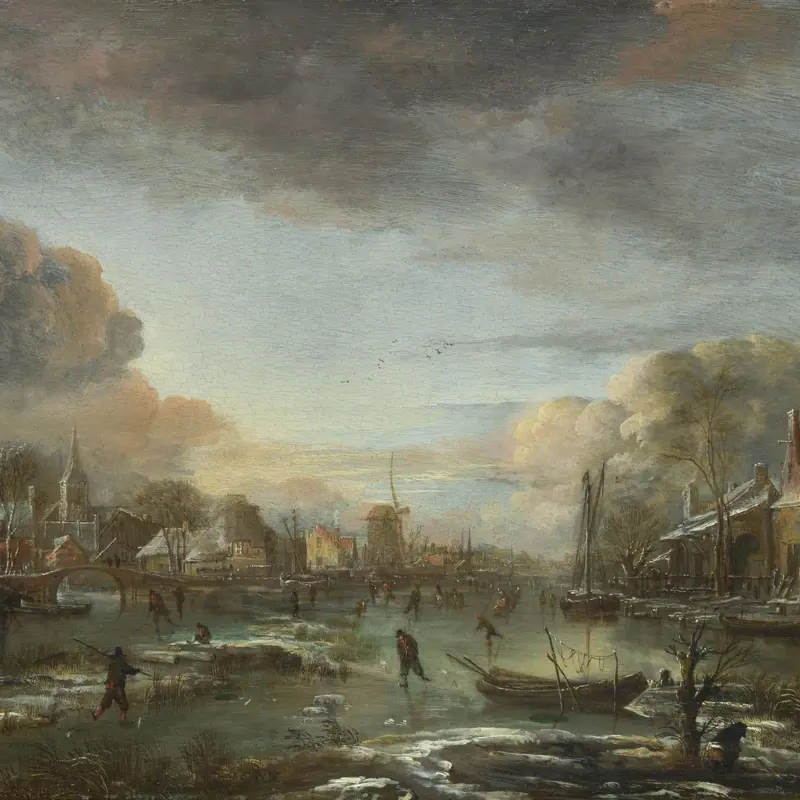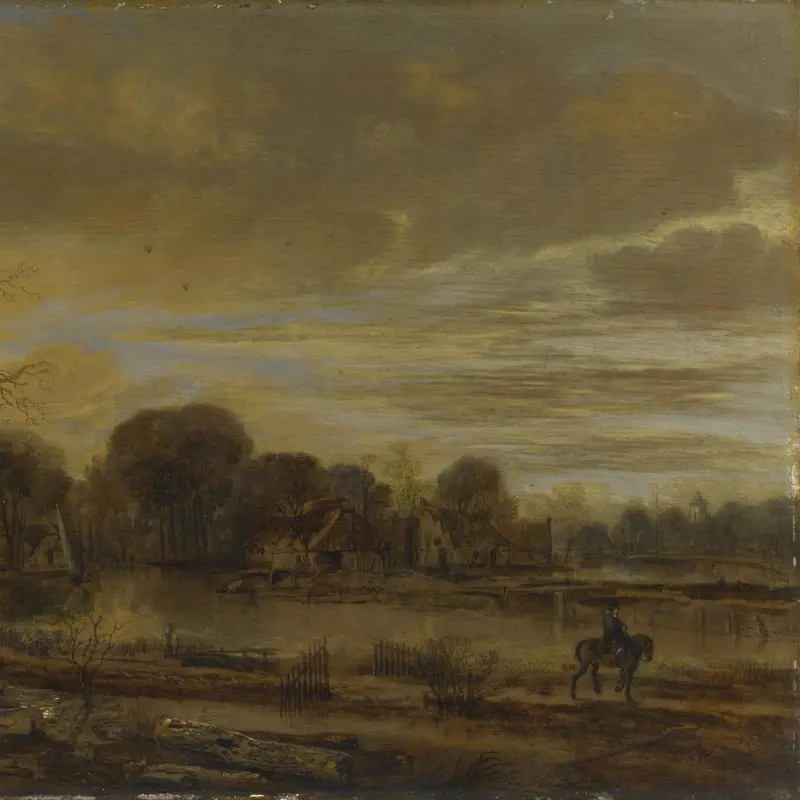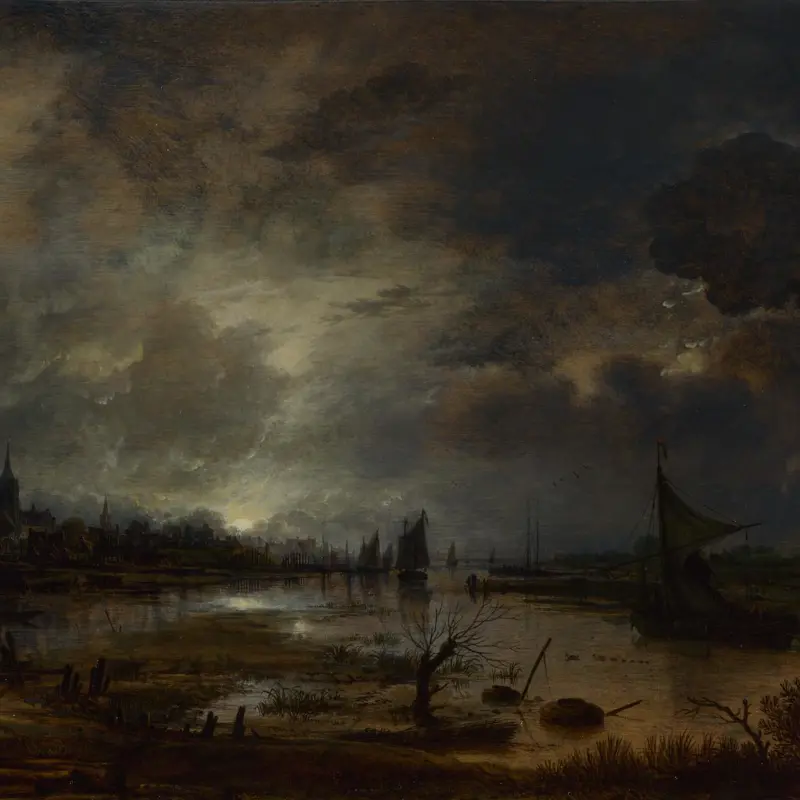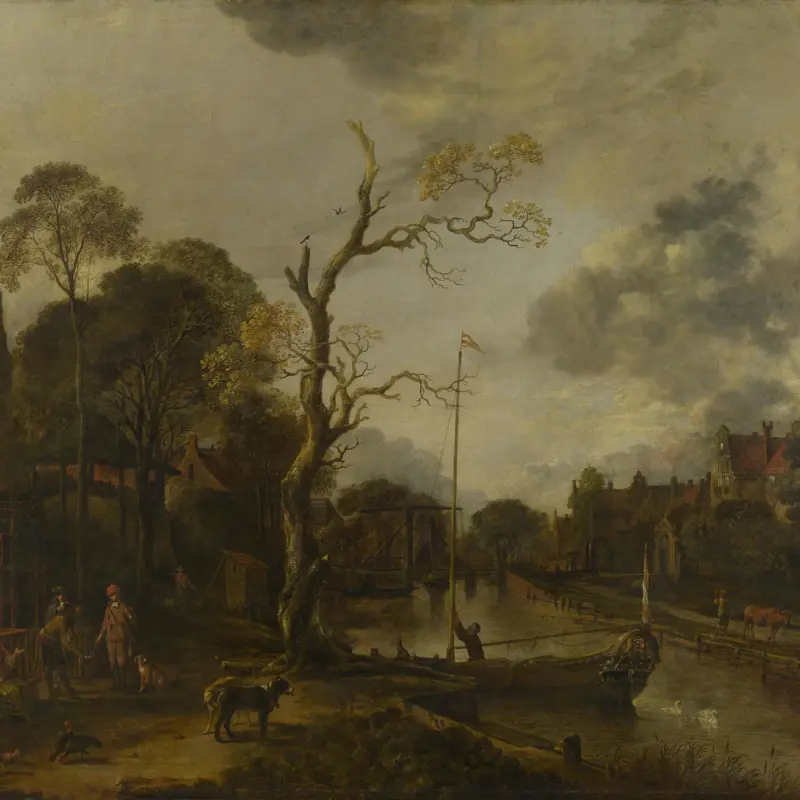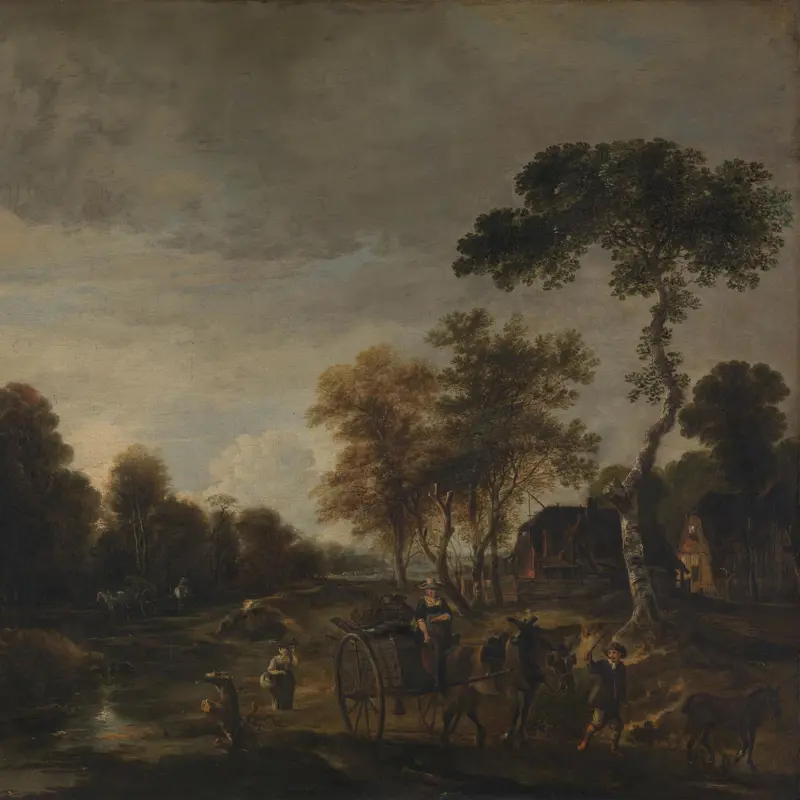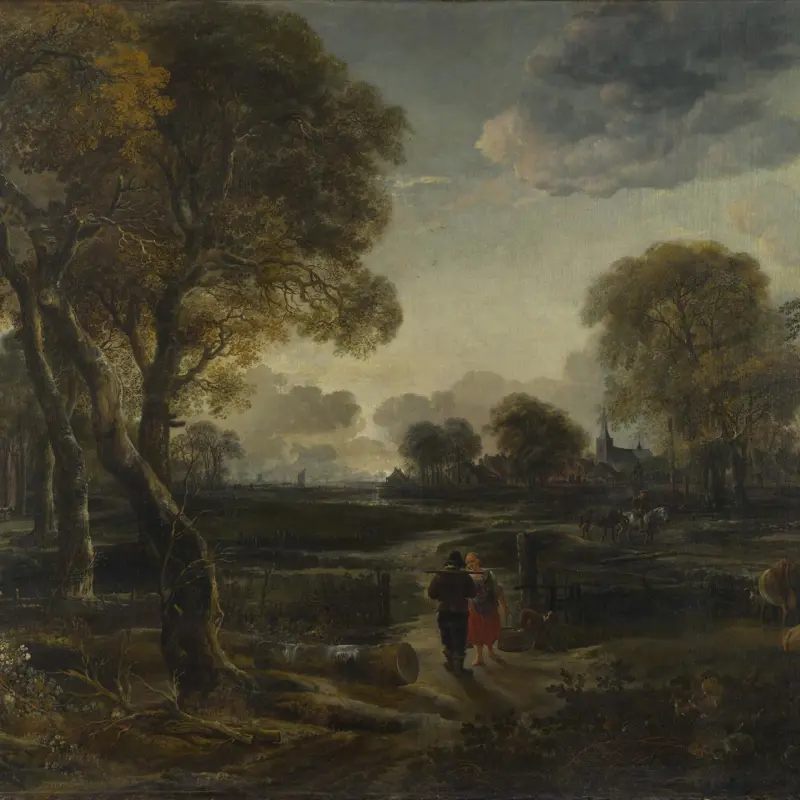Aert van der Neer, 'A Frozen River near a Village, with Golfers and Skaters', about 1648
About the work
Overview
The game of golf was played in the Middle Ages, but it became particularly popular in seventeenth-century Holland. It was called kolf, and was played on the ice. European winters in the mid-seventeenth century were severe. Rivers and canals froze so solid that the life normally lived in a village moved out onto them.
Van der Neer has shown his villagers at play. The man about to strike the ball with his long club is brightly lit. Perhaps a little chilly in his fashionable clothes, he stands out in his white shirt sleeves and kolfer’s stance. The little village is painted with affectionate detail. Outlines are crisp with a dusting of snow and each branch of the leafless trees is silhouetted against mounting clouds.
Van der Neer imagined his landscape, but would have known the buildings and painted them from drawings. To eke out his existence as an artist he kept an inn, but in spite of his entertaining pictures, he died bankrupt.
Key facts
Details
- Full title
- A Frozen River near a Village, with Golfers and Skaters
- Artist
- Aert van der Neer
- Artist dates
- 1603/4 - 1677
- Date made
- About 1648
- Medium and support
- Oil on canvas
- Dimensions
- 39.5 × 53 cm
- Inscription summary
- Signed
- Acquisition credit
- Bequeathed by John Staniforth Beckett, 1889
- Inventory number
- NG1288
- Location
- Not on display
- Collection
- Main Collection
Provenance
Additional information
Text extracted from the ‘Provenance’ section of the catalogue entry in Neil MacLaren, revised and expanded by Christopher Brown, ‘National Gallery Catalogues: The Dutch School: 1600–1900’, London 1991; for further information, see the full catalogue entry.
Bibliography
-
1960Maclaren, Neil, National Gallery Catalogues: The Dutch School, 2 vols, London 1960
-
1991Maclaren, Neil, revised by Christopher Brown, National Gallery Catalogues: The Dutch School, 1600-1900, 2nd edn (revised and expanded), 2 vols, London 1991
-
2001
C. Baker and T. Henry, The National Gallery: Complete Illustrated Catalogue, London 2001
About this record
If you know more about this work or have spotted an error, please contact us. Please note that exhibition histories are listed from 2009 onwards. Bibliographies may not be complete; more comprehensive information is available in the National Gallery Library.

